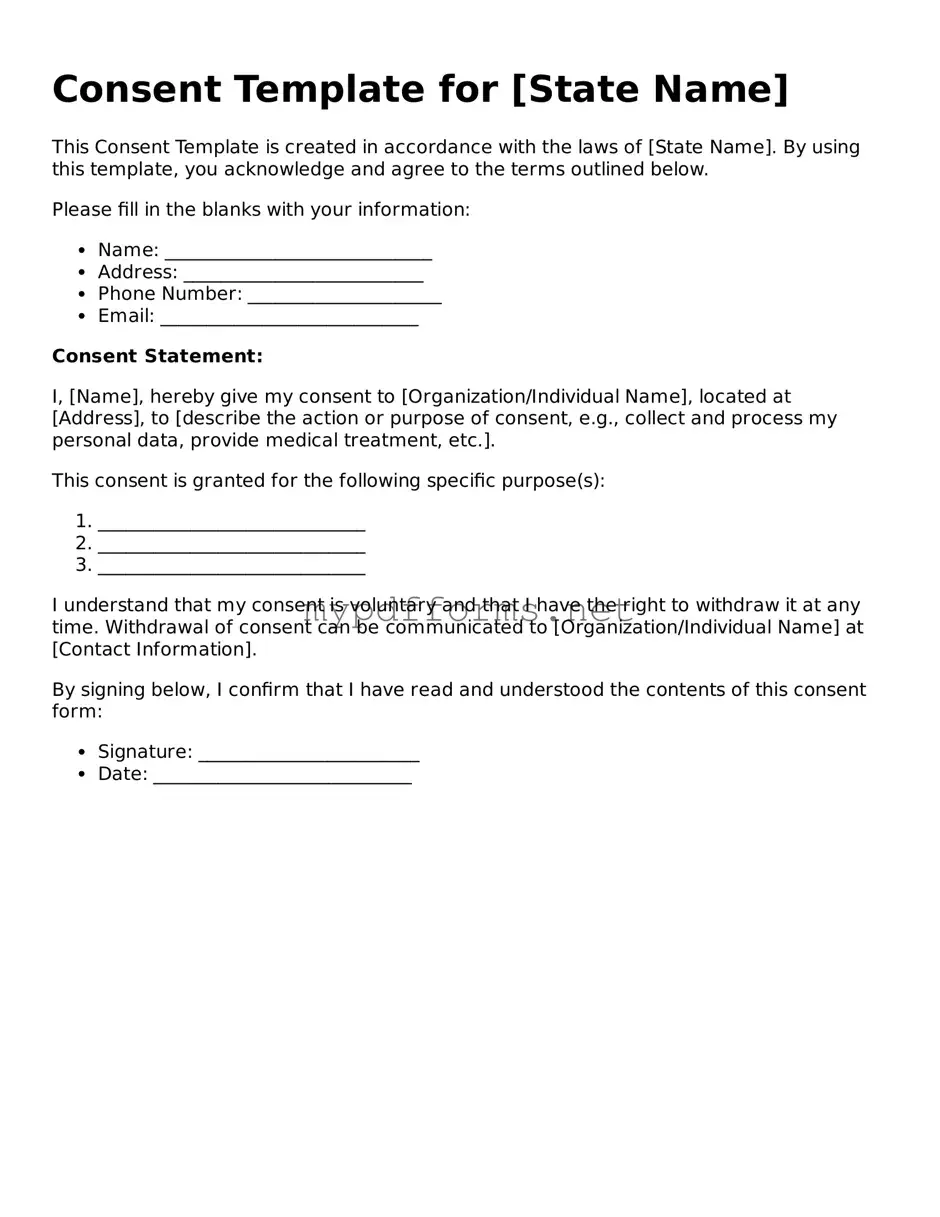The Consent Form is similar to a Release of Liability document. Both serve to protect one party from legal claims made by another. A Release of Liability typically involves an individual agreeing not to hold another party responsible for any injuries or damages that may occur during a specific activity. Like the Consent Form, it requires the signatory to acknowledge the risks involved, thereby ensuring that they are making an informed decision before proceeding.
Another document that shares similarities with the Consent Form is the Waiver. A Waiver is often used in contexts such as sports or recreational activities, where participants agree to relinquish their right to sue for injuries sustained. This document, like the Consent Form, emphasizes the participant's understanding of the risks involved and their voluntary choice to accept those risks. Both documents aim to limit liability for the organizers or providers of the activity.
The Medical Release Form also bears resemblance to the Consent Form, particularly in healthcare settings. This form allows healthcare providers to obtain permission to treat a patient or to share medical information with other parties. Both documents require individuals to provide informed consent, ensuring that they understand what they are agreeing to and the potential implications of their decisions regarding their health or treatment.
Informed Consent forms are another type of document closely related to the Consent Form. These forms are commonly used in medical and research contexts. They ensure that participants are fully aware of the procedures, risks, and benefits associated with a treatment or study before agreeing to participate. Like the Consent Form, Informed Consent emphasizes the importance of understanding and voluntarily accepting the terms presented.
The Non-Disclosure Agreement (NDA) is also similar in that it requires a party to consent to certain conditions before sharing sensitive information. While NDAs focus on confidentiality, both documents necessitate a clear understanding of the terms and potential consequences of violating those terms. The act of signing both documents signifies an agreement to abide by specific rules, whether related to liability or information sharing.
Another related document is the Parental Consent Form. This form is used when minors are involved in activities, requiring a parent or guardian to provide consent on their behalf. Like the standard Consent Form, it ensures that the responsible adult understands the risks and agrees to the participation of the minor, thereby protecting the organization or provider from potential legal issues.
In the realm of real estate transactions, understanding the various documents involved is crucial, especially when it comes to transferring ownership through a Quitclaim Deed. This document serves to clarify the process for individuals looking to complete such transfers, ensuring that all parties are aware of the necessary steps involved. To aid in this process, you can find the necessary form at https://quitclaimdocs.com/fillable-north-carolina-quitclaim-deed/, allowing for a seamless transition of property ownership.
The Terms and Conditions agreement shares similarities with the Consent Form as well. This document outlines the rules and guidelines that users must agree to before accessing a service or product. Both documents require individuals to acknowledge their understanding of the terms and the consequences of not adhering to them. They serve to establish a clear framework for expectations and responsibilities.
Finally, the Privacy Policy can be viewed as akin to the Consent Form in the context of data sharing. A Privacy Policy informs individuals about how their personal information will be collected, used, and protected. Like the Consent Form, it requires individuals to acknowledge their understanding and acceptance of the terms regarding their data. Both documents are essential for ensuring transparency and trust between parties.
